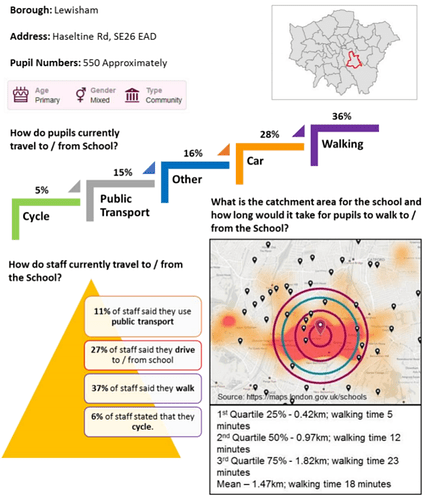SE26.life
12 May '19
Sadly, one of the top 50 worst polluted schools in London. But there is change coming.
Below is a detailed report into air quality around Haseltine School, with reference to Bell Green Retail Park expansion, and various other developments around Lower Sydenham, and plans to help reduce pollution around Haseltine. They have already installed a “green screen”, and more is on the way:
In response the Mayor is implementing a significant programme of measures, including bold proposals to reduce London’s deadly air pollution and protect the health and wellbeing of all
Londoners, including:
- The Toxicity Charge (T-Charge) now applies to older, more polluting vehicles in central London, which means that including the Congestion Charge drivers with these vehicles will now pay £21.50 total during peak congestion.
- Cleaning up London’s Buses - The Mayor is spending more than £300 million to transform London’s bus fleet by retrofitting thousands of buses and committing to phase out pure diesel double deck buses from 2018. 12 Low Emission Bus Zones have been announced, two of which
have already been delivered, putting the greenest buses on the capital’s most polluted routes. The zones are expected to reduce NOx emissions by 84 per cent and thousands of school children in these areas will benefit from cleaner air. - The Ultra Low Emission Zone (ULEZ) will supersede the T-Charge, and operate 24 hours a day, 7 days a week within the same area as the current Congestion Charging Zone (CCZ), The world’s first Ultra Low Emission Zone (ULEZ) is to start 8 April 2019, approximately 17 months
earlier than planned, and create stricter emissions standards for diesel vehicles, 24 hours, 7 days a week. Those that do not comply will face a charge. This is expected to reduce harmful NOX (Nitrogen Oxides) emissions by about 50 per cent in central London, 40 per cent in inner London and 30 per cent in outer London. - Expanding the ULEZ and tightening the Low Emission Zone (LEZ) - As part of the Mayor‘s pledge to help improve air quality and health for all Londoners, he is also proposing to make the London-wide Low Emission Zone (LEZ) stronger, and expand the Ultra Low Emission Zone (ULEZ) requirements for vehicles. This involves introducing a Euro 6 emissions standard
London-wide for heavy duty vehicles (i.e. buses, coaches, Heavy Goods Vehicles (HGVs) vehicles) from 26 October 2020, and expanding the ULEZ for light duty vehicles (i.e. cars, vans and motorcycles) so that all vehicles are subject to emissions standards within an area roughly bounded by the North and South Circular Roads from 25 October 2021. The introduction and expansion of the ULEZ, and tightening of the LEZ standards, is forecast to result in a significant reduction in NOx emissions across London. - London’s taxis – New taxis licensed after 1 January 2018 will need to be zero emission capable to help clean up London’s dirty air, with new ‘zero emission’ ranks for drivers who pioneer green
technology alongside a network of rapid electric charge points. - Low emission neighbourhoods – five low emission neighbourhoods have been founded across London to pioneer bold new measures to promote the use of low emission vehicles and improve local air quality, including low emission vehicle only streets, measures to promote deliveries by cycle cargo bikes and low emission vehicles, and bold proposals to promote walking and cycling.
- The London Environment Strategy – is a bold and ambitious strategy, with a particular focus on air quality. The strategy was consulted on in 2017 and will be published in 2018, and seeks to address the most urgent environmental challenges facing our London, to safeguard its environment over the longer term. This will be the first strategy to bring together approaches to every aspect of London’s environment, including: air quality, green infrastructure, climate change mitigation and energy, waste, adapting to climate change and ambient noise. To make the Mayor’s vision of transforming the city’s environment a reality, this strategy establishes some key aims for London, which include having the best air quality of any major city, making more than half of London’s area green and for tree canopy cover to increase by ten per cent by 2050, and making London a zero carbon city by 2050, with energy efficient buildings, clean transport and clean energy

